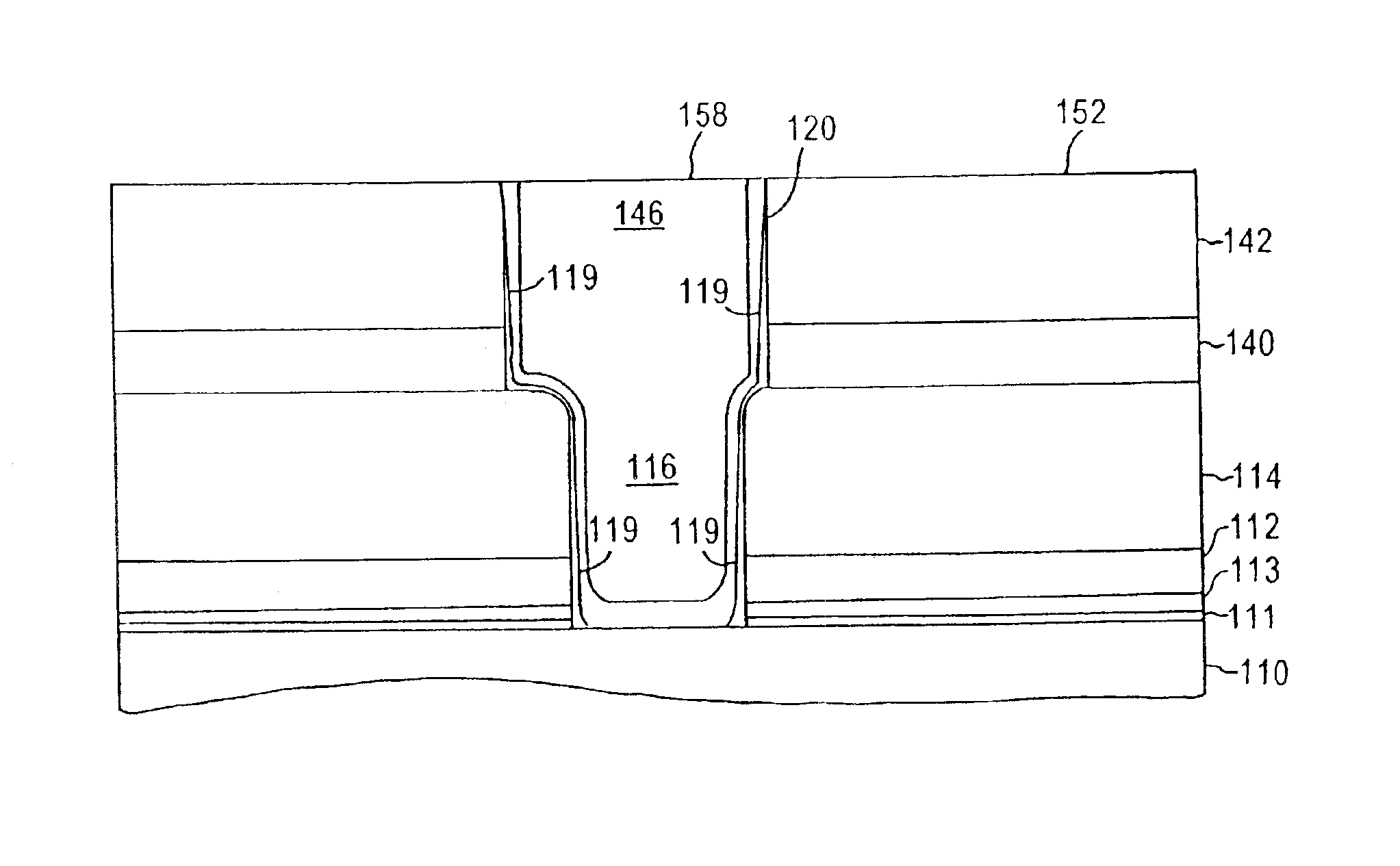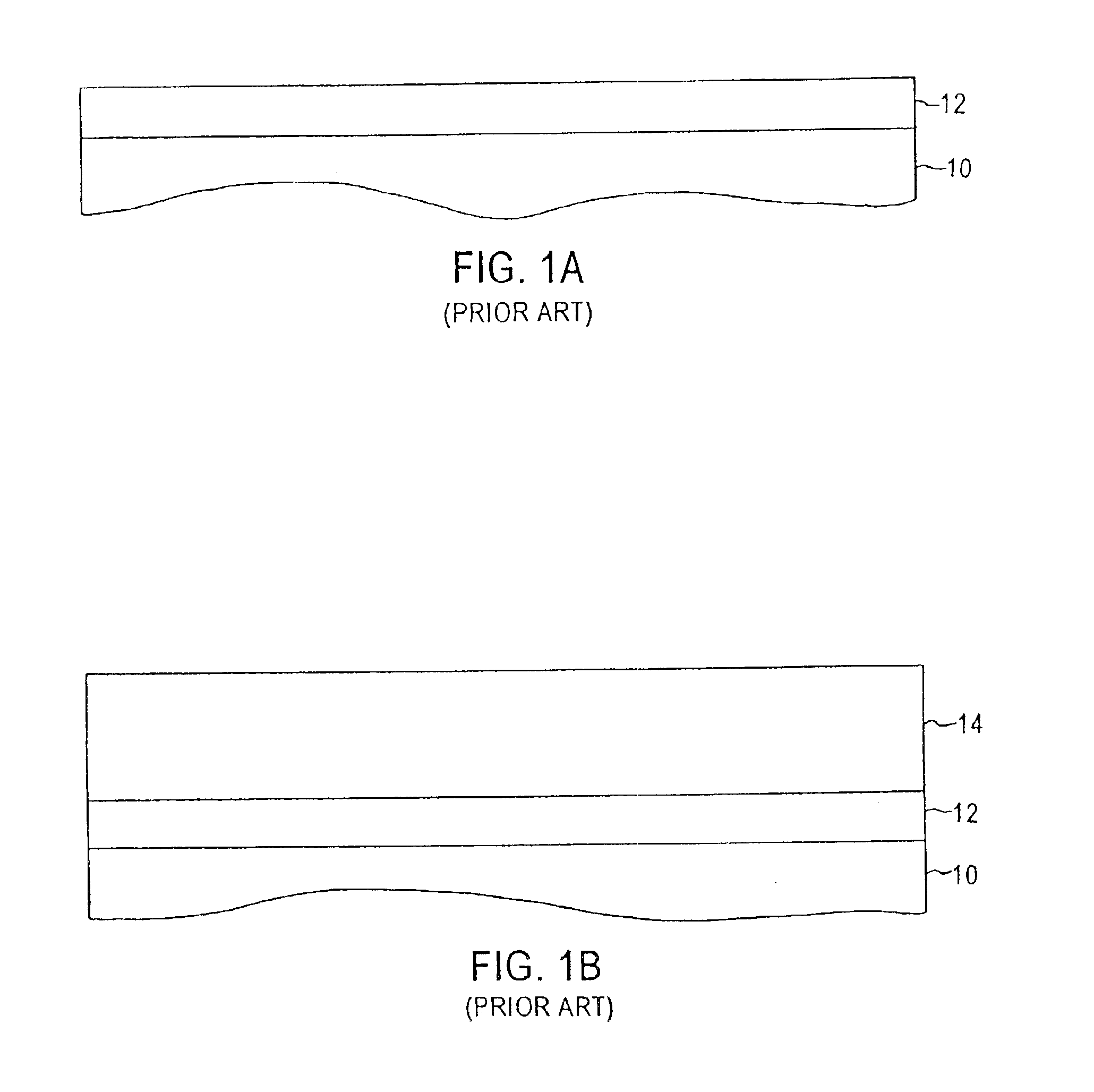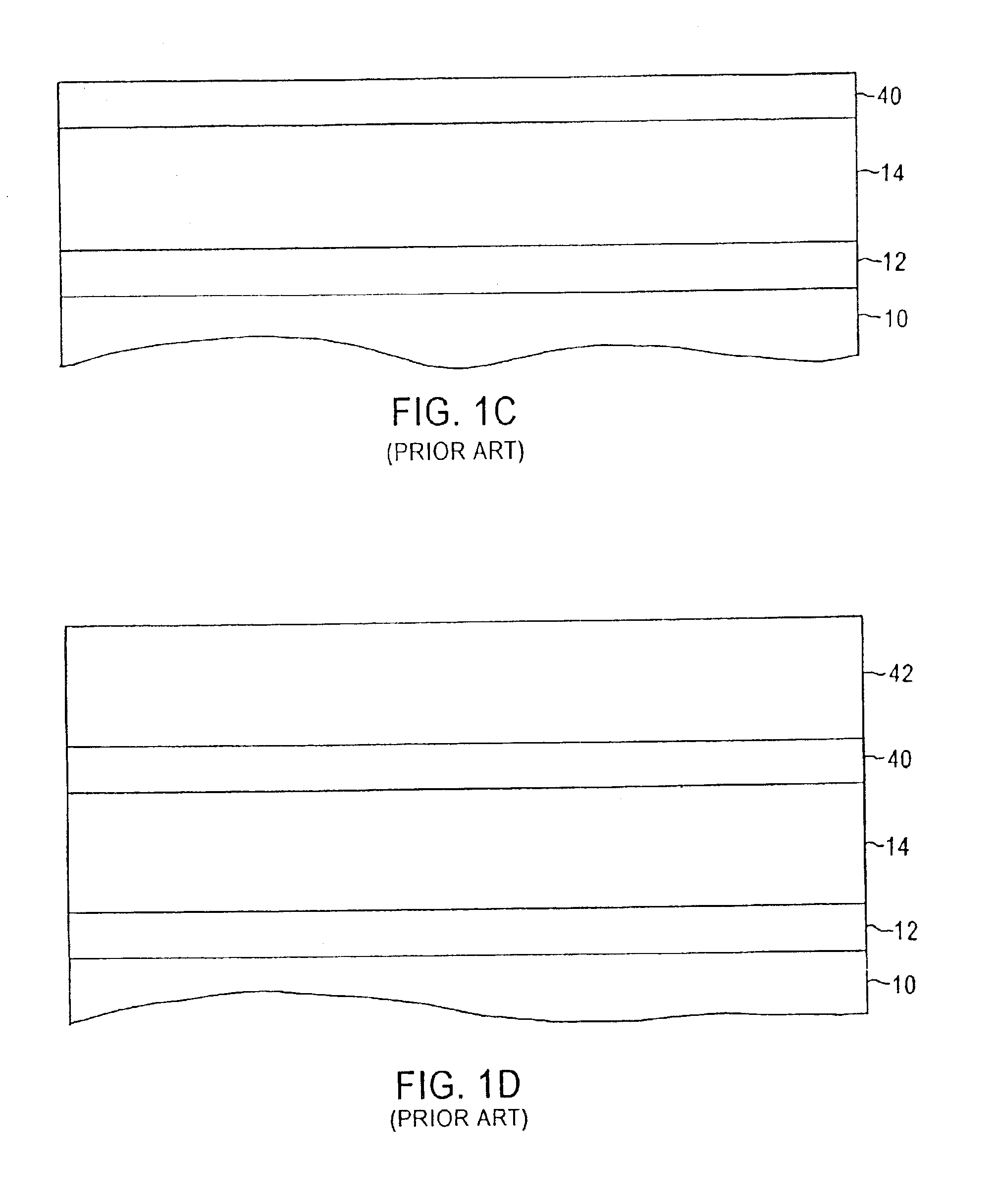Dual damascene integration scheme for preventing copper contamination of dielectric layer
a technology of dielectric layer and integration scheme, which is applied in the direction of semiconductor devices, semiconductor device details, electrical apparatus, etc., can solve the problems of increasing the requirements of high density and performance associated with ultra large scale integration (ulsi) semiconductor device wiring, reducing manufacturing throughput, and increasing manufacturing costs. , to achieve the effect of preventing the contamination of the dielectric layer and reducing the formation of voids
- Summary
- Abstract
- Description
- Claims
- Application Information
AI Technical Summary
Benefits of technology
Problems solved by technology
Method used
Image
Examples
Embodiment Construction
[0044]The present invention addresses and solves the problem of contamination from copper being deposited onto silicon oxide dielectric layers as a result of reverse physical sputtering, which is used to round corners of vias and trenches and to clean contaminants on the copper metallization layer below the via. This is achieved, in part, by providing a second etch stop layer, a third etch stop layer and a barrier layer below the third etch stop layer. Advantageously, after the second etch stop layer is removed using conventional etching techniques, the third etch stop layer and the barrier layer are sputtered off during the reverse physical sputtering process. Importantly, the material of the barrier layer that is sputtered off is then deposited onto the exposed portions of the dielectric layers and creates a sidewall diffusion barrier. This is accomplished before the copper from the copper layer is sputtered off onto the dielectric layers. Thus, once the copper layer is reached du...
PUM
 Login to View More
Login to View More Abstract
Description
Claims
Application Information
 Login to View More
Login to View More - R&D
- Intellectual Property
- Life Sciences
- Materials
- Tech Scout
- Unparalleled Data Quality
- Higher Quality Content
- 60% Fewer Hallucinations
Browse by: Latest US Patents, China's latest patents, Technical Efficacy Thesaurus, Application Domain, Technology Topic, Popular Technical Reports.
© 2025 PatSnap. All rights reserved.Legal|Privacy policy|Modern Slavery Act Transparency Statement|Sitemap|About US| Contact US: help@patsnap.com



